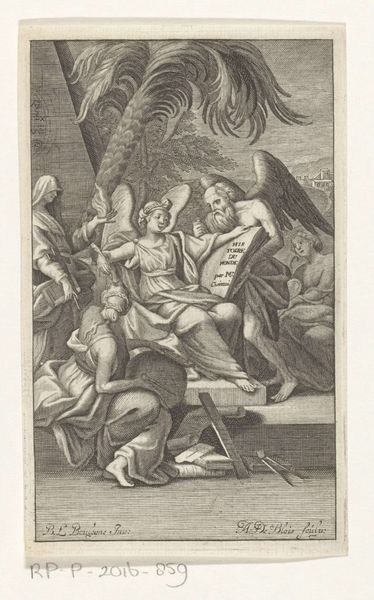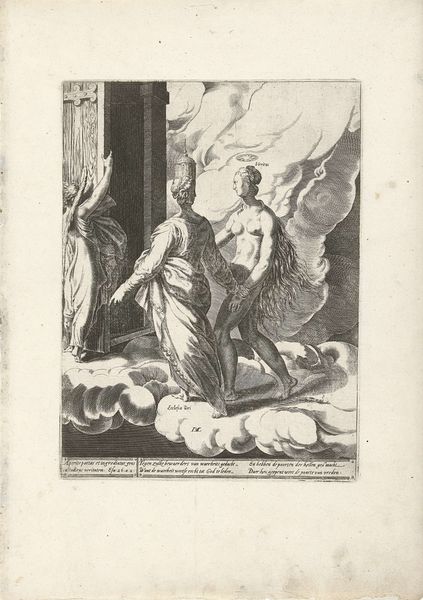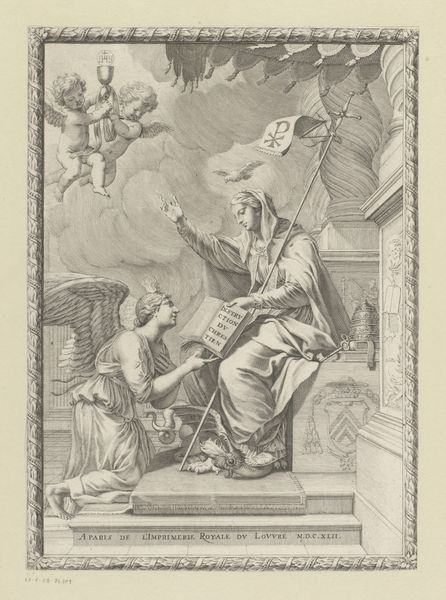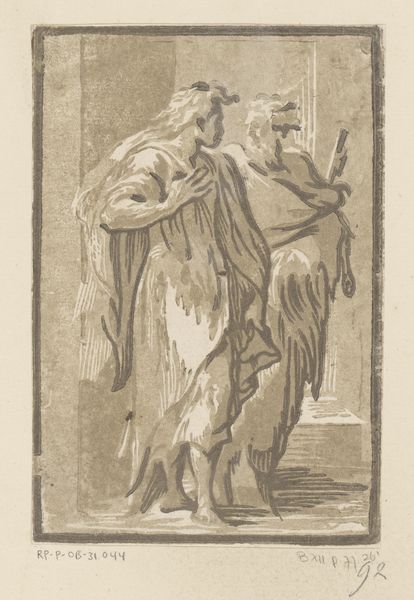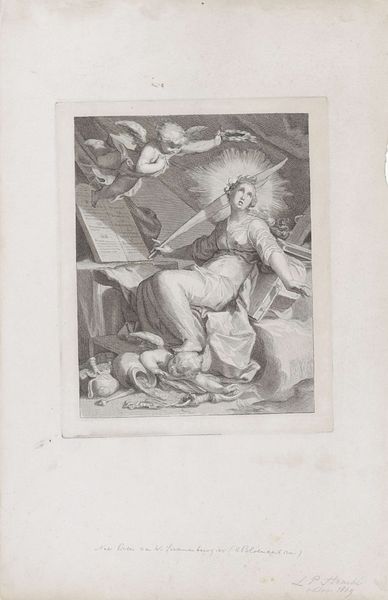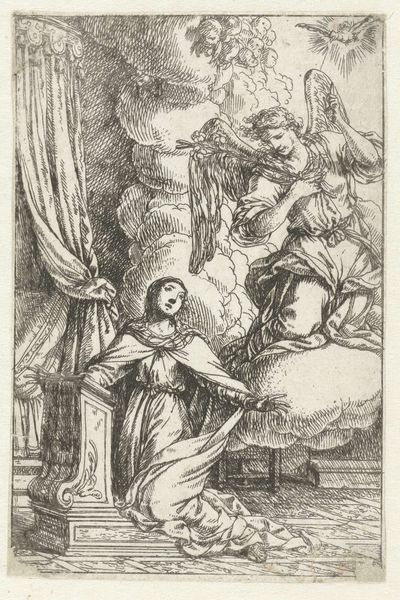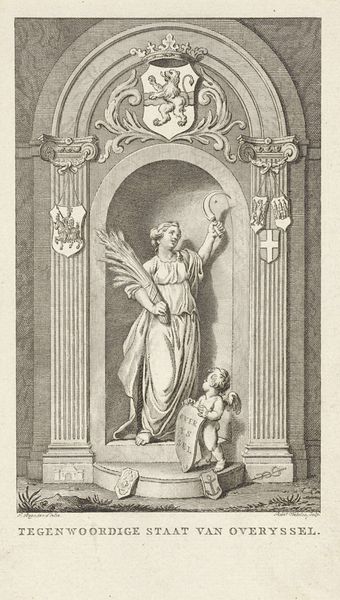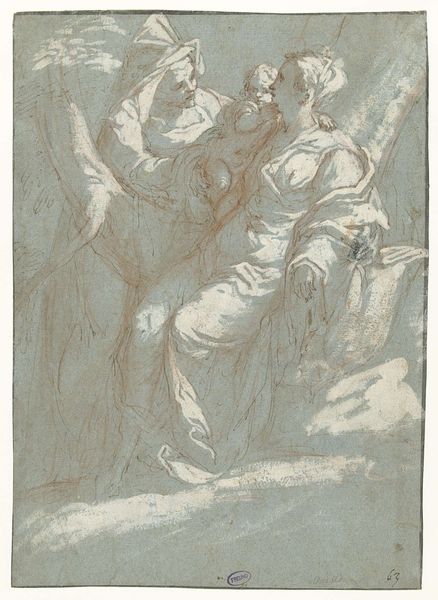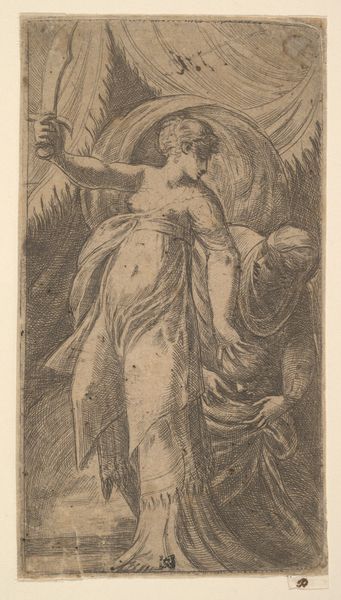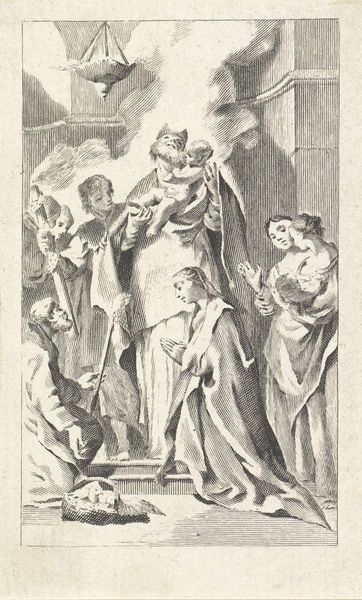
Dimensions: height 160 mm, width 105 mm
Copyright: Rijks Museum: Open Domain
This allegorical composition was etched by Cesare Massimiliano Gini in the 18th century. Here we see a figure presiding over a group. Note the compass on the plinth, a symbol with roots stretching back to ancient geometry and divine creation. In medieval times, it was used to draw the universe, a tool of God himself. This symbol, of cosmic order and intellect, reappears through history, from the compass in the hand of God in illuminated manuscripts to its adoption by Freemasonry, where it represents reason, wisdom, and morality. Consider how such a potent symbol can be both a tool for measuring space and a metaphor for measuring one’s own moral compass. A similar symbol is used by William Blake in his Newton painting where it stands for the reductionist and rationalist ideas of the Enlightenment. Just as the figures here yearn for something beyond the physical world, this emblem speaks to a human longing for meaning, a desire that transcends time. These emblems resurface, evolve, and take on new meanings in different historical contexts.
Comments
No comments
Be the first to comment and join the conversation on the ultimate creative platform.
